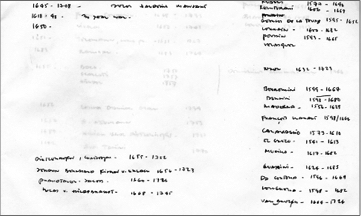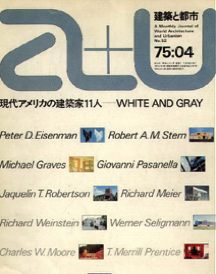As Pierini said of Moretti, “The articles that open each of the seven magazines are not canonical editorials in the sense of introducing the issue contents. Rather, they can be read as excerpts from a longer treatise on architectural design that would come to fruition in the last issue, Strutture e Sequenze di Spazi.” Similarly, one might see the overall body of Seligmann’s work as a continuously evolving curriculum, a living pedagogical prospectus.
For example, the publication of Five Architects in 1973 assumed an immediate importance for those in academia, primarily because it was one of the first books that showed architectural work that was didactic in nature, and presented in a way so that one could derive numerous formal, structural, and organizational lessons from them: the suggestion was that one could simultaneously design a work and analyze that work. Given this, Rafael Moneo has said that he felt that the absence of Werner Seligmann from these “five” was quite unfortunate, in that Seligmann’s work had perhaps the most didactic implications of them all.
In his lectures and writings, Seligmann associated the value of a practice with its instructive capacity, and with the architect’s ties to academia. For example, in his essay on the work of Mario Campi & Franco Pessina, Seligmann reinforces the importance of the intellectual engagement of the observer:
"Campi-Pessina (and Campi-Pessina-Piazzoli) buildings have an obvious, immediate, and strong visual appeal that arises from the simplicity of their form, their easily recognizable ideas, and their exquisite details and careful construction. [T]hey are not, however, 'one-liners.' On careful examination, the buildings reveal extremely dense compositional invention and artistic rigor, and on these terms they require the serious involvement of the viewer. It is this quality that makes them architect's architects."
Which brings us back to the notion of Seligmann’s eclecticism—of interests, styles, and models. Seligmann seemed to delight in Colin Rowe’s characterization of his architecture as if by “Ludwig Lloyd Corb-Aalto,” attributes that are especially noticeable in the works of the early 1960s, such as the Beth David Synagogue, the Wheaton Triangle Competition, and the Miller House additions. This perhaps culminated in the 1972 competition entry for the Birmingham Civic Center, where the individual buildings subscribe largely to Miesian plan strategies, the sections have an Aalto-esque sensibility, and the site plan and elevations possess a Corbusian flavor. However, this goes beyond the synthetic amalgamation of individual formal vocabularies: it was in many ways an intricate and even wily consensus of disparate modernisms.
And Seligmann was determined to be a modernist, even if he had to redefine the terms of modernism as he went along. As his career progressed, he could always be seen floating and bobbing above the late-modernist debates, never distracted or capsized. On the one hand, Seligmann’s vivacity helped him tread the waves. On the other, as this monograph reveals, his belief that within certain specific strains of modernism—especially those of Aalto, Wright, Mies, and most definitely Le Corbusier—lay certain universal formal precepts, providing the grounding for a continuously unfolding set of new propositions, in turn supporting his search for elusive, teachable “truths.”

Fig 11 Like Moretti, Seligmann was undoubtedly fond of the baroque. Note this list of architects and artists jotted down by Seligmann from memory.
Introduction page 9

Fig 10 A+U cover, no. 52, April 1975. The “Special Feature” was entitled “White and Gray: Eleven Modern American Masters,” and was guest edited by Peter D. Eisenman and Robert A.M. Stern. Interestingly, Seligmann was often grouped with the “Five,” most notably in this edition of A+U. Here the original “Five,” including Seligmann and minus Hejduk, are described as the “Whites,” an unfortunate editorial shorthand, presumably to provide purchase to the “Gray” designation.